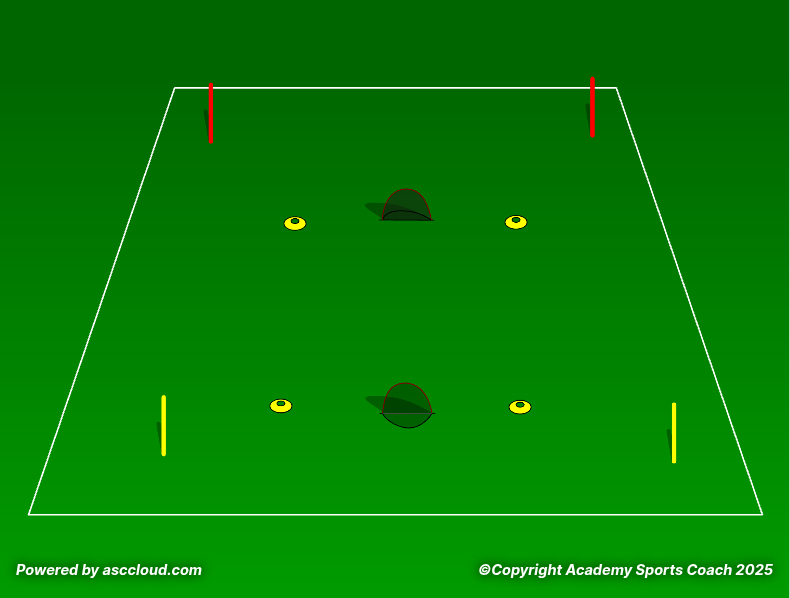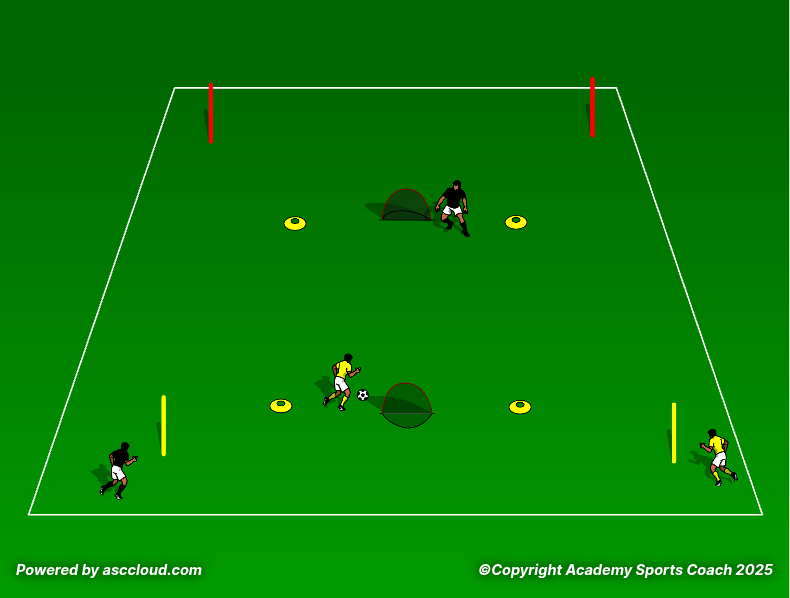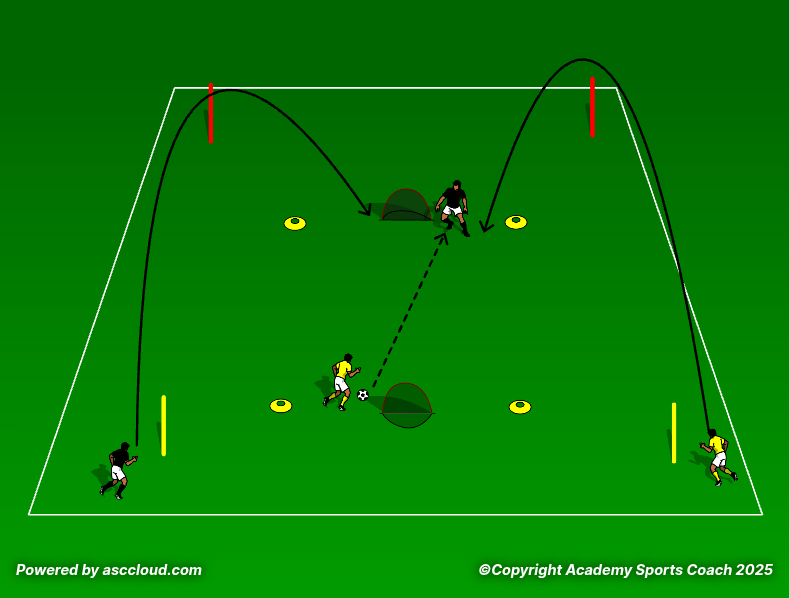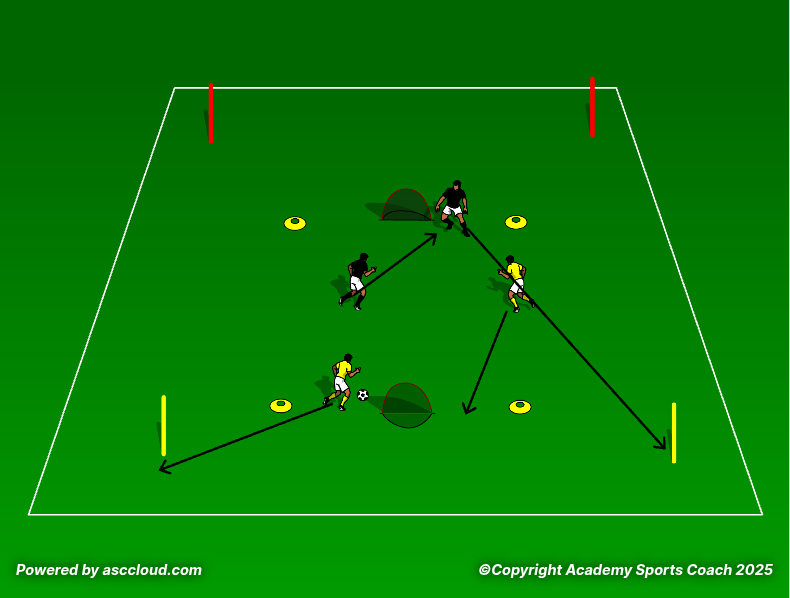By Matt Carroll
The 1v1 Race is a great drill to set the tempo for a session involving pressing, fast breaks, or any session that involves high-intensity work. It can also be used as an on-the-ball conditioning drill to help players with fitness, acceleration, and deceleration.

The 1v1 Race is set up with one player with a ball at the end of a 20x20 grid facing their opponent standing on the other end. At each end of the grid, there should be a pug goal set up. About 10 feet to the left and right of the corners of the player with the ball, place a coaching stick. Twenty feet away,y running lengthwise to the grid, place another coaching stick. A player for each team should be lined up at one of the sticks in line with the grid.

The drill starts when the player with the ball passes to the other player in the grid. They immediately begin a 1v1 with the attacking player trying to score on the opposite grid, and the passing player looking to win the ball and score. As soon as the pass is played, the runners at the coaching sticks take off and look to round the far stick on their side. Once they do s,o they can then enter the main grid and help their teammate.

The concept here is that the 1v1 and the sprint are both conditioning elements that are simulating a player making an off-the-ball run to support their teammate, or a defender running back to aid an opposition breakaway. The players are incentivized to sprint around the sticks since if they get there first, they gain an advantage and can better support their teammate.
Play continues until one team scores or the ball goes out of bounds. Immediately, the two players who were initially in the grid leave, a ball is played into the two sprinters who are now in the grid, and two more players sprint in from the sticks, and the drill repeats.

Key coaching points here will be talking about the attacking player going at the defender quickly to press the advantage of the space provided in the grid, the defensive player should look to delay the attacking player since once the attack becomes a 2v1 to the defense, or a 2v2 with both players the defender gains an advantage of limiting the space in the grid, making it harder for the attacker to take advantage of it.
By Matt Carroll


